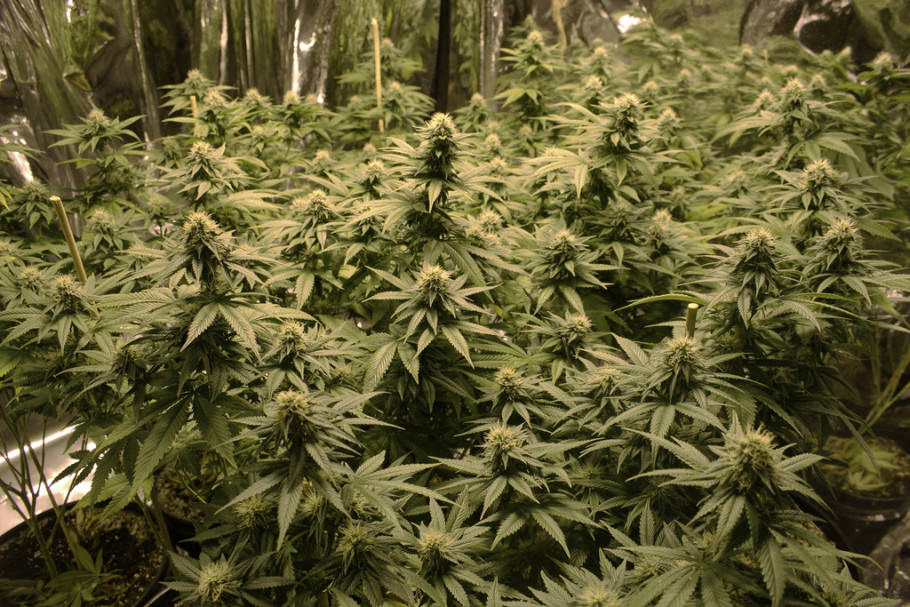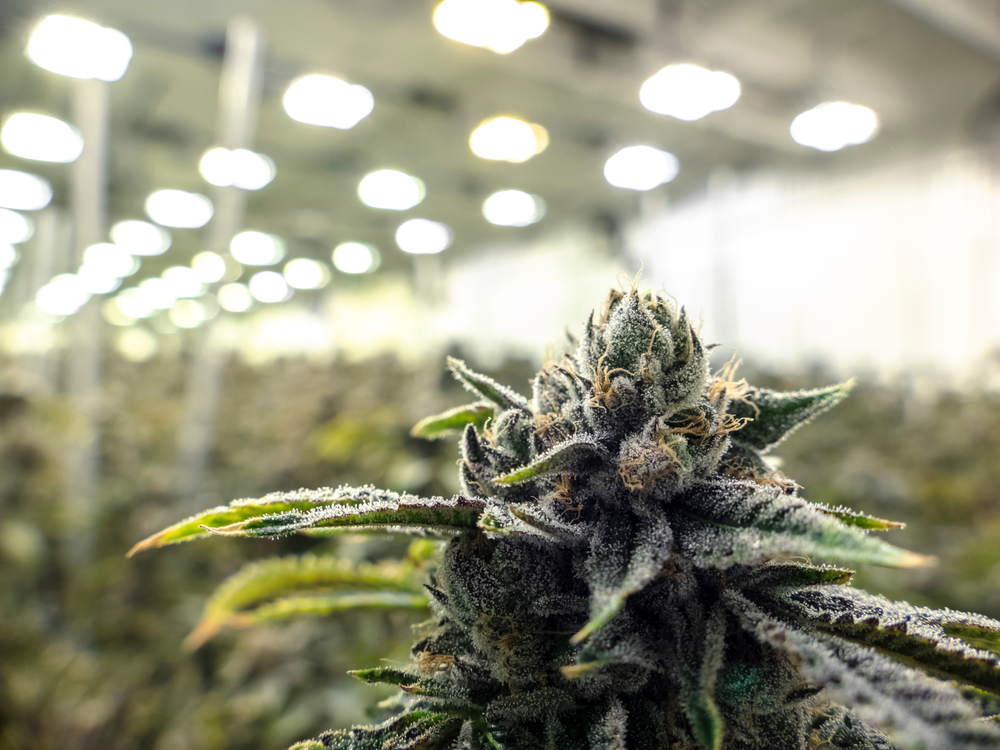Today we want to talk to you about a technique that is gaining followers and detractors in equal measure among cultivation experts: depriving plants of light during the last days of flowering. Although it may sound strange, many believe that this method can significantly improve the quality of the buds, enhancing their aroma, flavor, and potency. But…how is that possible? Don’t plants need light for their most basic vital functions?
In this article, we will break down this practice in detail, explaining how it works, why it can be effective, and how you can implement it in your own grow for the best results. Of course, we will also see arguments for and against its application.

The photoperiod in indoor cannabis cultivation
As you probably already know, the photoperiod is crucial in growing cannabis indoors, since cannabis plants depend on the hours of light and darkness to develop correctly, and will grow or flower depending on the hours of uninterrupted darkness received. Thus, it will be the grower who decides when flowering will begin by changing the number of hours of daily darkness. Here we briefly explain the specific needs and the photoperiods most commonly used by growers:
Growth Phase
During the growth stage or vegetative phase, cannabis plants need between 18 and 24 hours of daily light. This long light period mimics summer conditions, promoting rapid and vigorous vegetative growth. Normally, photoperiod varieties are grown with a photoperiod of 18/06 and automatic varieties with one of 20/04, even 24 hours a day.
Flowering Phase
To induce flowering, it is necessary to increase the number of daily hours of darkness, adjusting the photoperiod to 12 hours of light and 12 hours of darkness. This change simulates fall conditions when the days are shorter and plants are in full bloom. Uninterrupted darkness is crucial, as any interruption or source of light stress during the night can stress plants and negatively affect flower production.
As you can see, manipulating the photoperiod allows you to control the life cycle of the plant, making flowering possible at any time of the year in an indoor environment. Following a strict 12/12 regimen during flowering ensures that plants develop dense, resinous buds. To do this, we recommend using automatic timers to maintain a constant photoperiod, ensuring that the growing space is completely dark during the dark period, and monitoring the plants for any signs of stress or abnormalities that may be caused by problems in the photoperiod. You can try others like 11/13 or 10/14 if you have plants that take a long time to mature since in many cases these photoperiods are used to shorten the duration of flowering.

The Photoperiod of cannabis plants grown indoors
In this post we explain the various photoperiods that we can offer our plants, depending on whether we want them to remain in a vegetative state or if we want them to start flowering. We show you different photoperiods from the classic 18/6h and 12/12h so that you can optimise your indoor garden to suit your needs.
Final flowering phase: total darkness for 48 hours?
If the topic of photoperiods interests you, you may have found several sites that claim that leaving plants in complete darkness during the last two days before harvest will increase THC production and improve the flavor and aroma of your buds. But is this true? What are these claims based on?
If you do a little research online, you will find many sources with arguments for and against this technique; To start, you may come across this paragraph that talks about a study that would prove such a theory:
The Stichting Institute of Medical marijuana (SIMM), the first company to sell marijuana through the pharmacies of Holland, has been investigating the medical possibilities of cannabis, together with TNO laboratories and the University of Leiden.
One of their discoveries has been that to keep the ripe plants in the dark before harvesting could increase their potency. SIMM’s growers separated a crop of mature plants, harvested half of them and kept the other half in absolute darkness for 72 hours before cutting and drying . Analysis of the resulting dried buds showed that some varieties had seen an increase of THC of up to 30%, while CBD and CBN remained the same.
Broadly speaking, it talks about a three-way study where it was concluded that after 72 hours in the dark before harvesting, some varieties would have had an increase in the amount of THC of 30%, without increases in the amount of other cannabinoids like CBD or CBN. However, the bad news is that it seems that this study was never published, or at least it is really difficult to find; We have not achieved it, so the only thing we have are these two paragraphs that go around from Blog to Blog.
Is it really possible that a variety that has needed 60 days of flowering photoperiod to produce 20% THC produces 7% more in just 3 days? A good number of growers have a hard time believing this, and we can’t blame them. Let’s see below the main arguments for and against this practice:

Darkness at the end of flowering: Pros and cons
As you have seen, and despite the existence of supposed studies and the testimonies (these are easy to find) from many growers who claim that the method works, there is an equal number of growers who do not believe such a change in plants is possible in just 2 or 3 days of cultivation. These are some of the arguments put forward by defenders of this technique:
- Increased resin production: During the dark cycle, plant respiration is at its peak. Daylight provides the necessary energy so that, during the dark period, the growth of trichomes and various compounds inside occurs, something that is normal during the flowering phase. At the end of ripening, you shouldn’t see too many new trichomes forming. Thus, although there could be an increase in the substances produced by the plant, it seems difficult for a significant number of new trichomes to be produced in 2 or 3 days.
- Increased terpene production: Terpenes and other secondary metabolites are formed in trichomes and mainly during the dark cycle. It would be believed, therefore, that this final period of darkness would lead to a higher content of these aromatic compounds.
- Peak terpene levels at the end of the dark cycle: Terpene levels are highest at the end of the dark cycle, just before the lights come on or the sun rises. The heat of the day evaporates some of the volatile terpenes, so it makes sense that the highest levels are found when they are forming during the cycle with cooler temperatures and the absence of light.
- Retraction of sugars/starches to the root zone during the night period: This would result in flowers with better flavor and combustion; During the dark cycle, sugars and starches retreat to the root zone, which improves the flavor and combustion of the bud. At the end of the plant’s life, this process should be almost complete, so it is a good idea to cut during the dark cycle to ensure that the plant has not absorbed them. However, we must also keep in mind that plants need light energy to produce these sugars!
- Chlorophyll is not produced/activated in the dark and existing chlorophyll begins to break down: This process occurs during the drying period anyway, although it is believed that these last few days of growing in complete darkness would accelerate this process.

How to save on power consumption in your marijuana grow room
Nowadays, anything that saves on the electricity bill is welcomed with open arms, since we are paying more than ever for it. Well, today we want to share with you several tricks that you can use in your indoor cultivation to see how the dreaded electricity bill decreases while the results in your indoor cultivation even improve.
However, and as we have already told you, there are no serious scientific studies specifically designed to clarify this matter, so all we have is a legion of growers saying that it works for them, against another equally large group saying that it makes no sense to apply this technique, even more so when the chances of problems such as mold or male flowers appearing just at the moment when “the work is already done” are increasing.
Whatever the case, we encourage you to continue researching this topic and share your opinion with all of us. While waiting for studies to clear our doubts, we have no choice but to try it for ourselves in the most scientific way possible and draw our own conclusions. We will do it that way, that’s for sure!
Happy harvest!
References:
- Moving Away from 12:12; the Effect of Different Photoperiods on Biomass Yield and Cannabinoids in Medicinal Cannabis, Tyson James Peterswald, Jos Cornelis Mieog, Razlin Azman Halimi, Nelson Joel Magner, Amy Trebilco, Tobias Kretzschmar, Sarah Jane Purdy
- Optimizing Photoperiod Switch to Maximize Floral Biomass and Cannabinoid Yield in Cannabis sativa L.: A Meta-Analytic Quantile Regression Approach, Michelle Dang, Nishara Muthu Arachchige, Lesley G. Campbell
- Photoperiodic Flowering Response of Essential Oil, Grain, and Fiber Hemp (Cannabis sativa L.) Cultivars, Mengzi Zhang, Steven L. Anderson, Zachary T. Brym, Brian J. Pearson
The articles published by Alchimiaweb, S.L. are reserved for adult clients only. We would like to remind our customers that cannabis seeds are not listed in the European Community catalogue. They are products intended for genetic conservation and collecting, in no case for cultivation. In some countries it is strictly forbidden to germinate cannabis seeds, other than those authorised by the European Union. We recommend our customers not to infringe the law in any way, we are not responsible for their use.
Source link
#myth #science #Alchimia #Grow #Shop